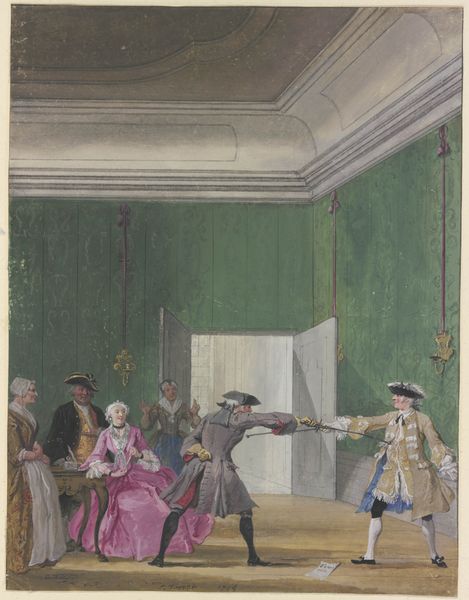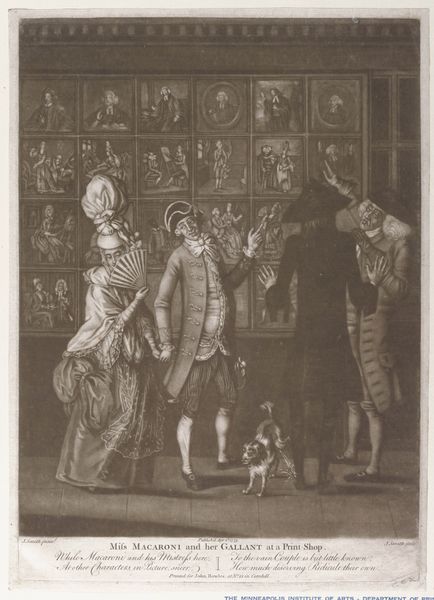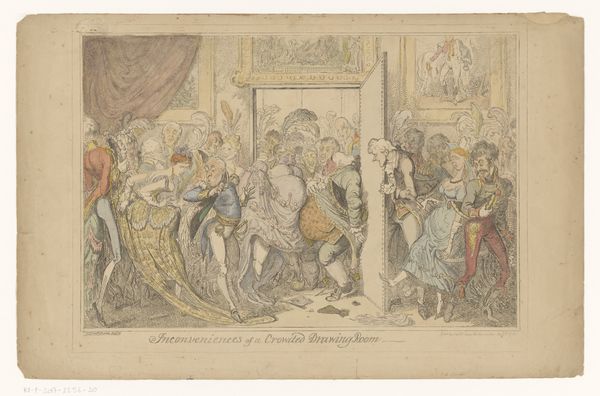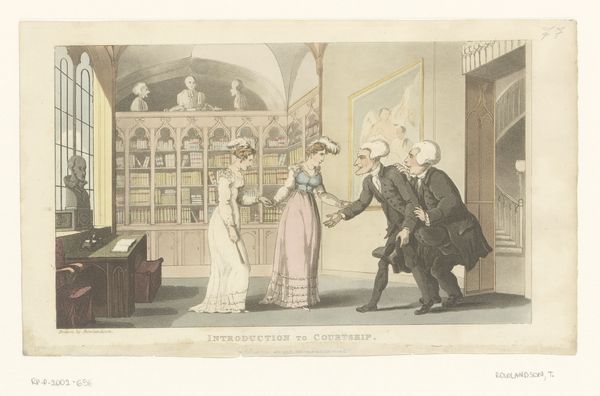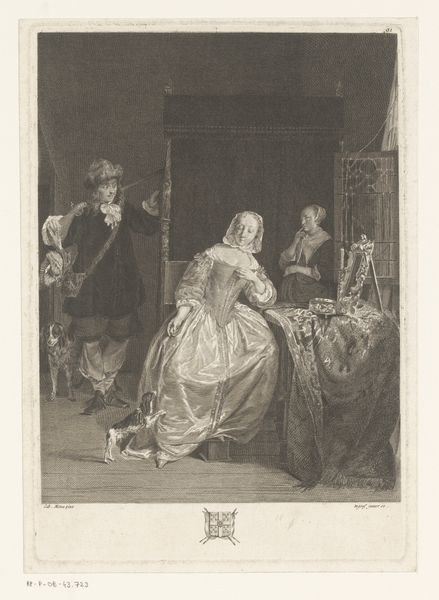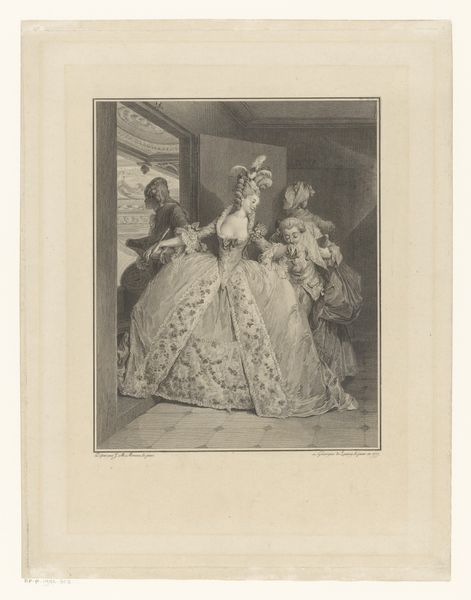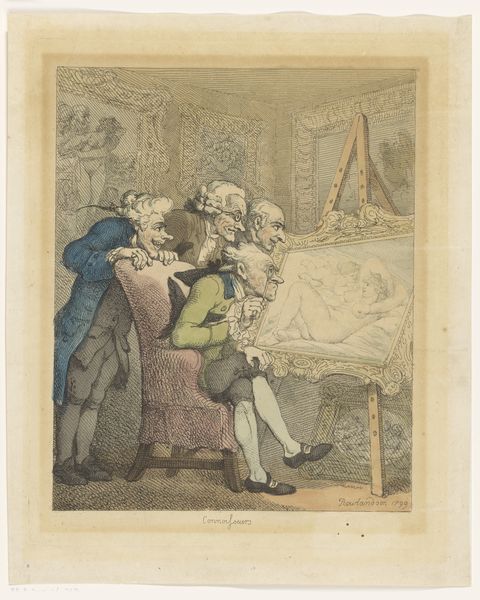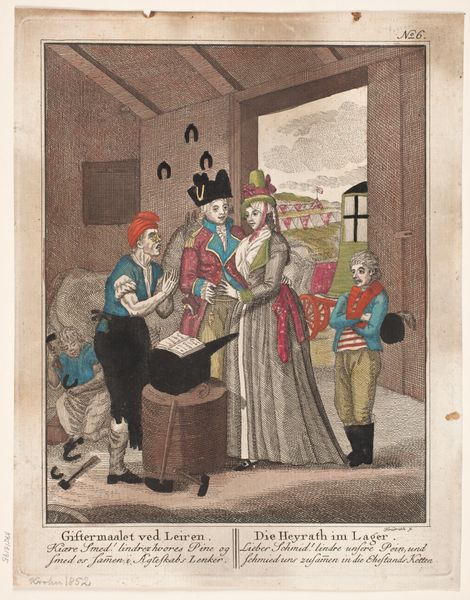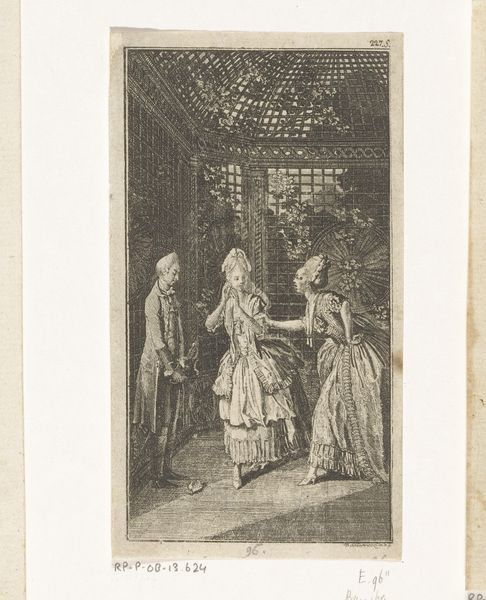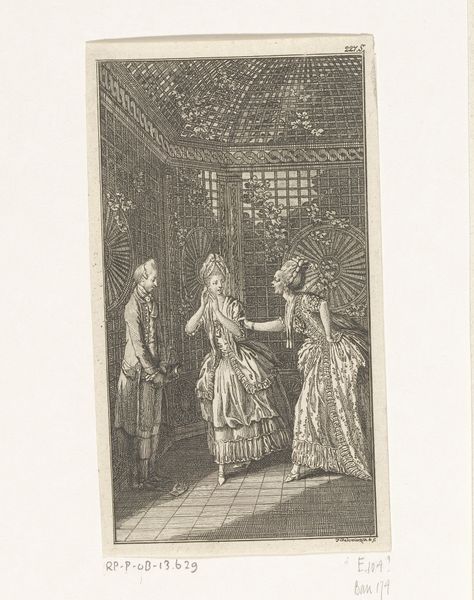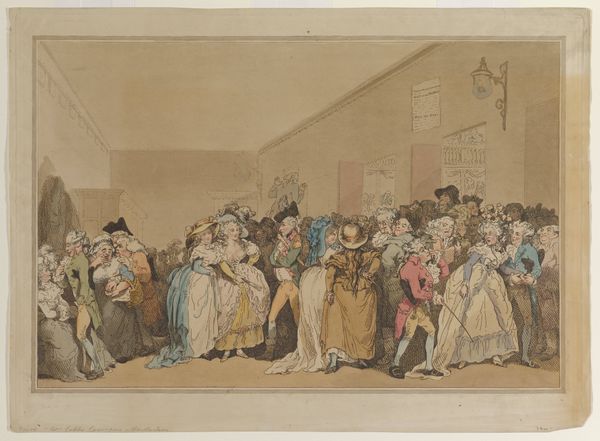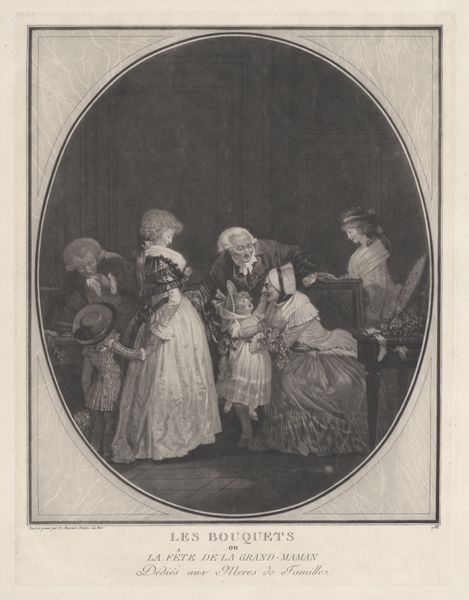
Miss Macaroni and Her Gallant at a Print Shop 2 - 1773
0:00
0:00
Dimensions: 13 3/4 x 9 7/8 in. (34.93 x 25.08 cm) (plate)
Copyright: Public Domain
Editor: So, here we have "Miss Macaroni and Her Gallant at a Print Shop," a watercolor print from around 1773 by John Raphael Smith. It's bustling, and satirical – there's so much going on in their expressions and outfits, and even in the prints displayed behind them. What stands out to you the most? Curator: What captivates me is how the piece engages with the politics of identity. Consider the term "Macaroni," a popular term used in the 1760s and 70s referring to young, wealthy British men who adopted Italian fashion and mannerisms. These men were often criticized for being effeminate and un-British, so how does this context change your interpretation of the subjects? Editor: It makes the image feel much more pointed, less simply observational. Was Smith criticizing their embrace of foreign trends? Curator: Potentially, but also consider the role of the print shop itself. Prints democratized art, making it accessible to a wider audience, who could then engage with and critique societal figures like these "Macaronis". Smith's work participates in this public discourse. Can we read this as a commentary on consumerism, class, or even performative identity? Editor: I hadn't thought about it that way. So the image isn't just a portrait; it’s actively involved in shaping public opinion about these identities. What about the figure of Miss Macaroni, and her role within this visual landscape? Curator: Her exaggerated attire reflects back on, and almost satirizes, the masculine display. It pushes us to look at how gender operates as a social construct within the context of 18th century anxieties around class, nation and gender performance. Does her presence, and Smith's rendering of it, serve to empower, or to further ridicule? Editor: I initially just saw an amusing scene, but now I recognize how deeply embedded it is within complex social and political currents. I'll definitely look at Rococo art differently. Curator: Precisely. It shows how art can reflect, refract, and actively shape those very currents.
Comments
minneapolisinstituteofart almost 2 years ago
⋮
Macaroni Prints The term "macaroni"-named after the Italian pasta-was coined in the 1760s to refer to the fashionable young English gentlemen who traveled to Italy and brought back the food, manners, and dress of the Continent. By the 1770s, however, it had become a term of ridicule, used to describe, as one contemporary magazine put it, "a person who had exceeded the ordinary bounds of fashion." These were men and women, generally of lesser privilege, who had imitated the dress and affected manners of the Grand Tourists-their enormous powdered wigs, extravagant, tight clothes, small shoes, and delicate manners. Thus "macaroni" came to stand for the eighteenth-century fashion victim and the widespread artifice, effeminacy, and social climbing that was seen as corrupting Georgian England. The macaroni phase was recorded for posterity with great humor in countless caricature prints, which exaggerated the clothes and particularly the hairstyles of this fad to an absurd degree. With the American Revolution unfolding at just this time, British soldiers were said to have insulted enemy soldiers with the same pejorative macaroni term, singing famously of the colonials' foolishness in the song Yankee Doodle. It jokes about a naïve dandy who "stuck a feather in his hat and called it macaroni." The song was happily taken up by the Yankees and is still popular today.
Join the conversation
Join millions of artists and users on Artera today and experience the ultimate creative platform.
